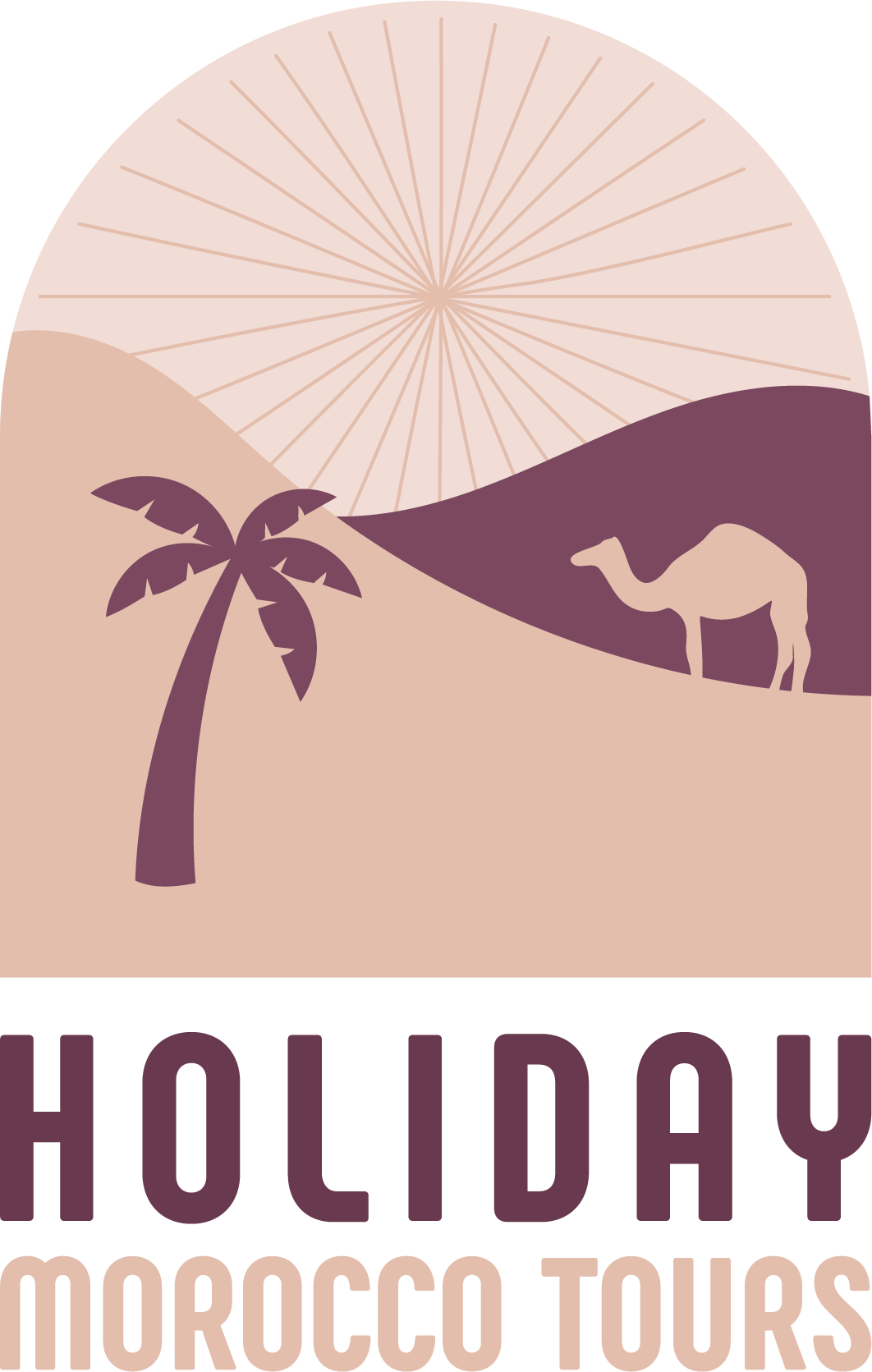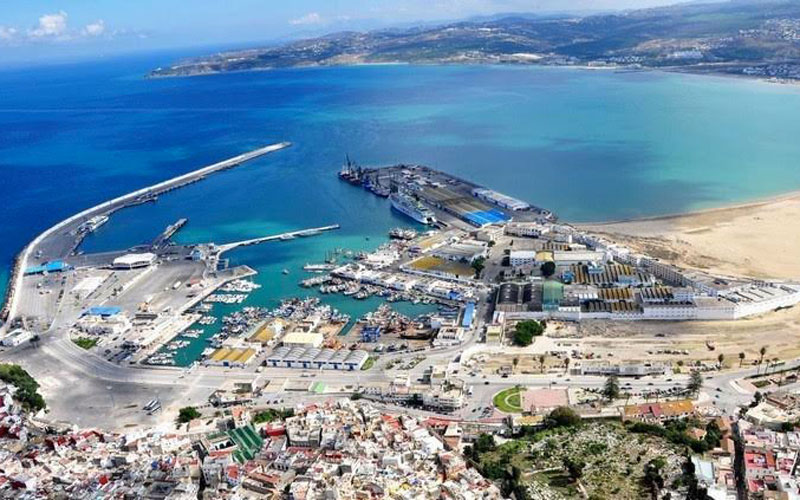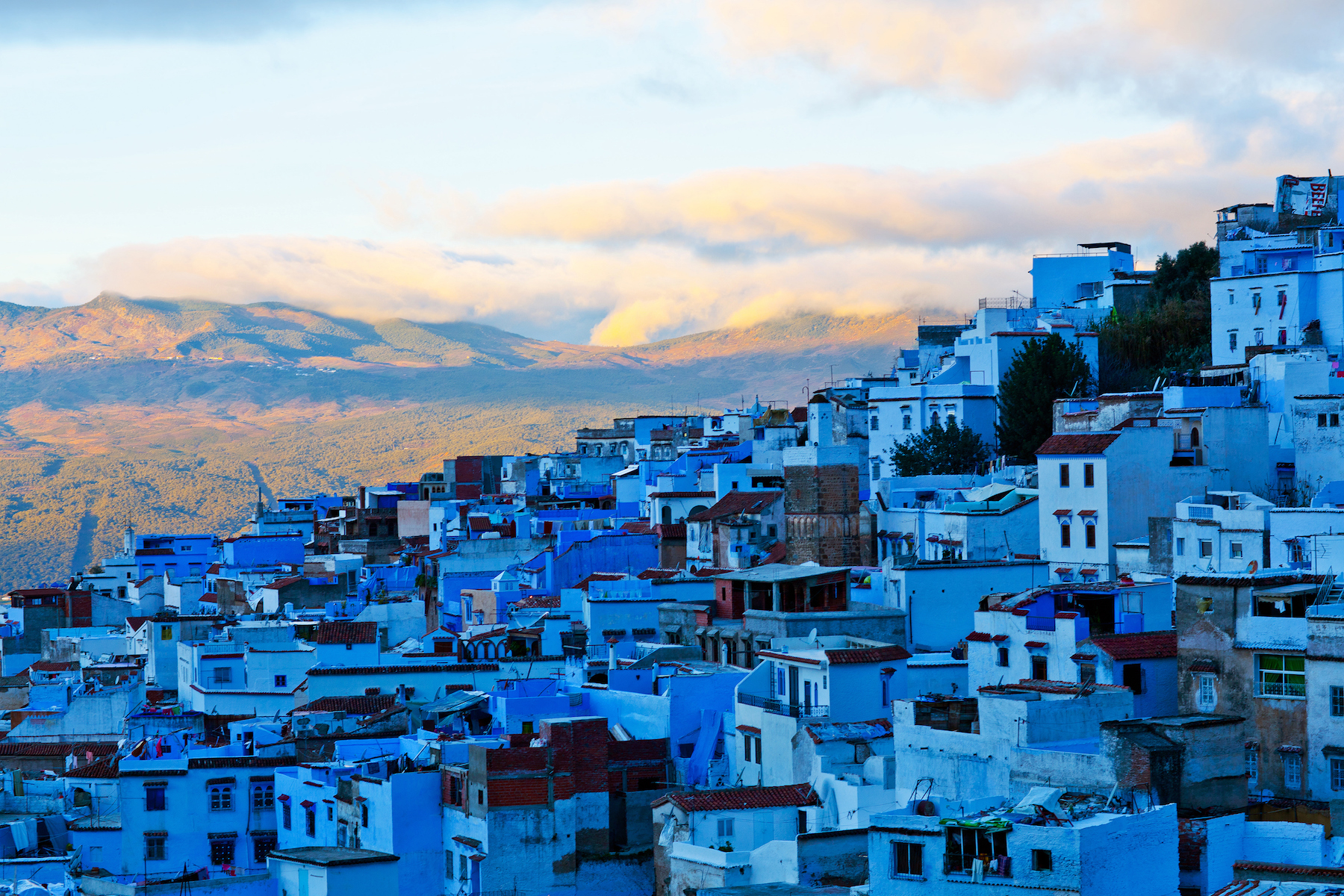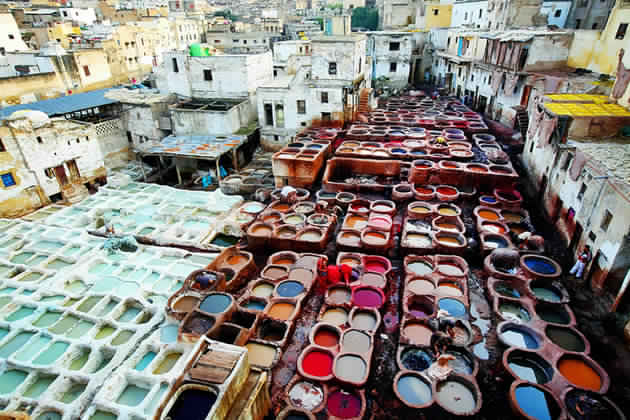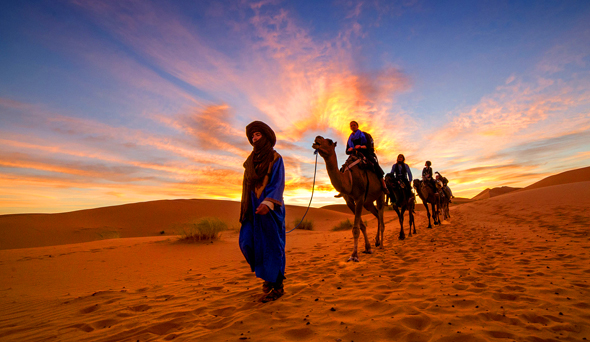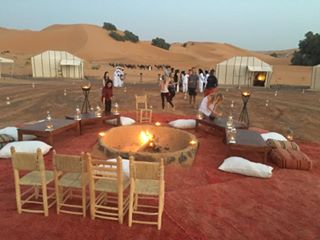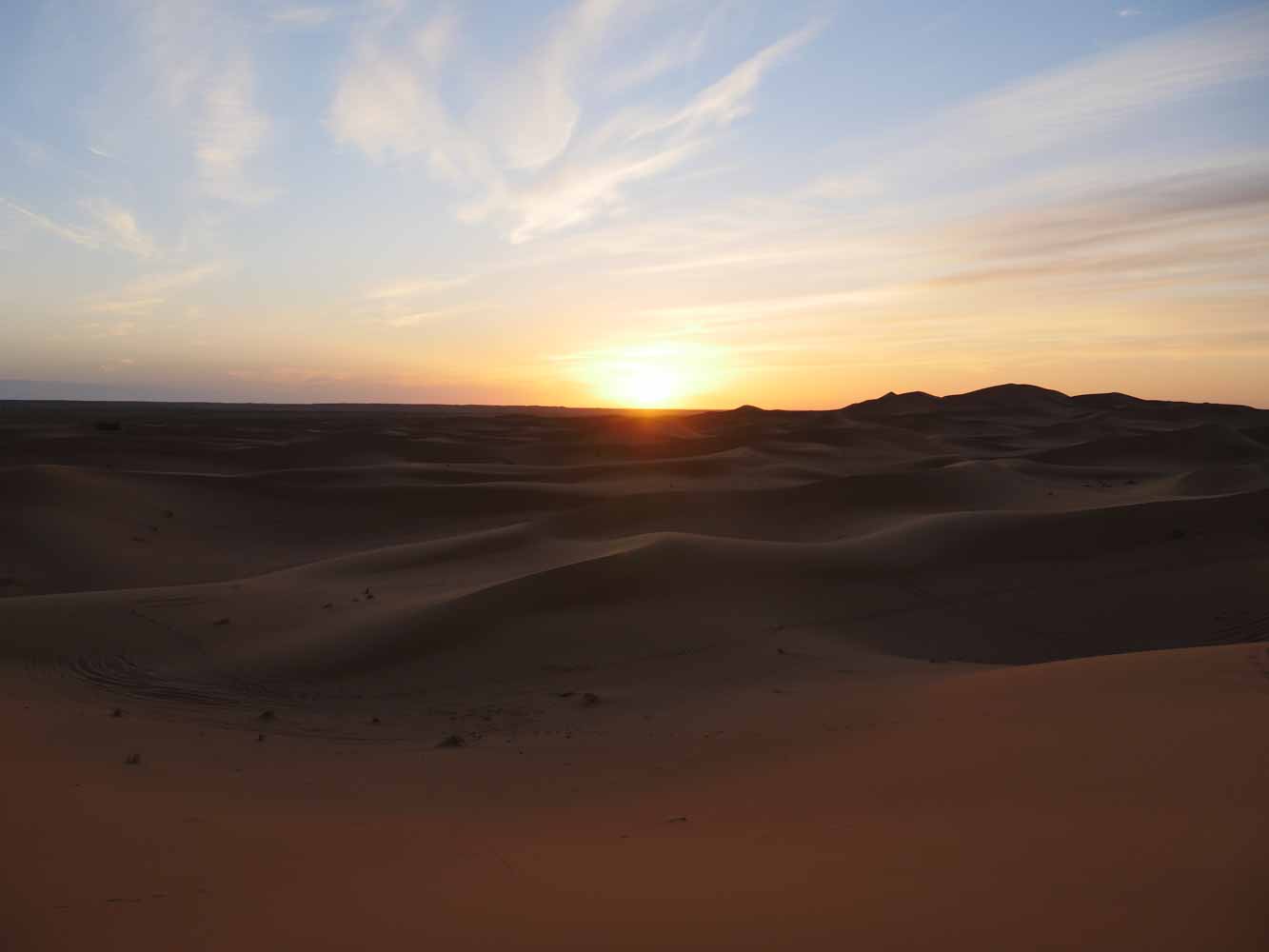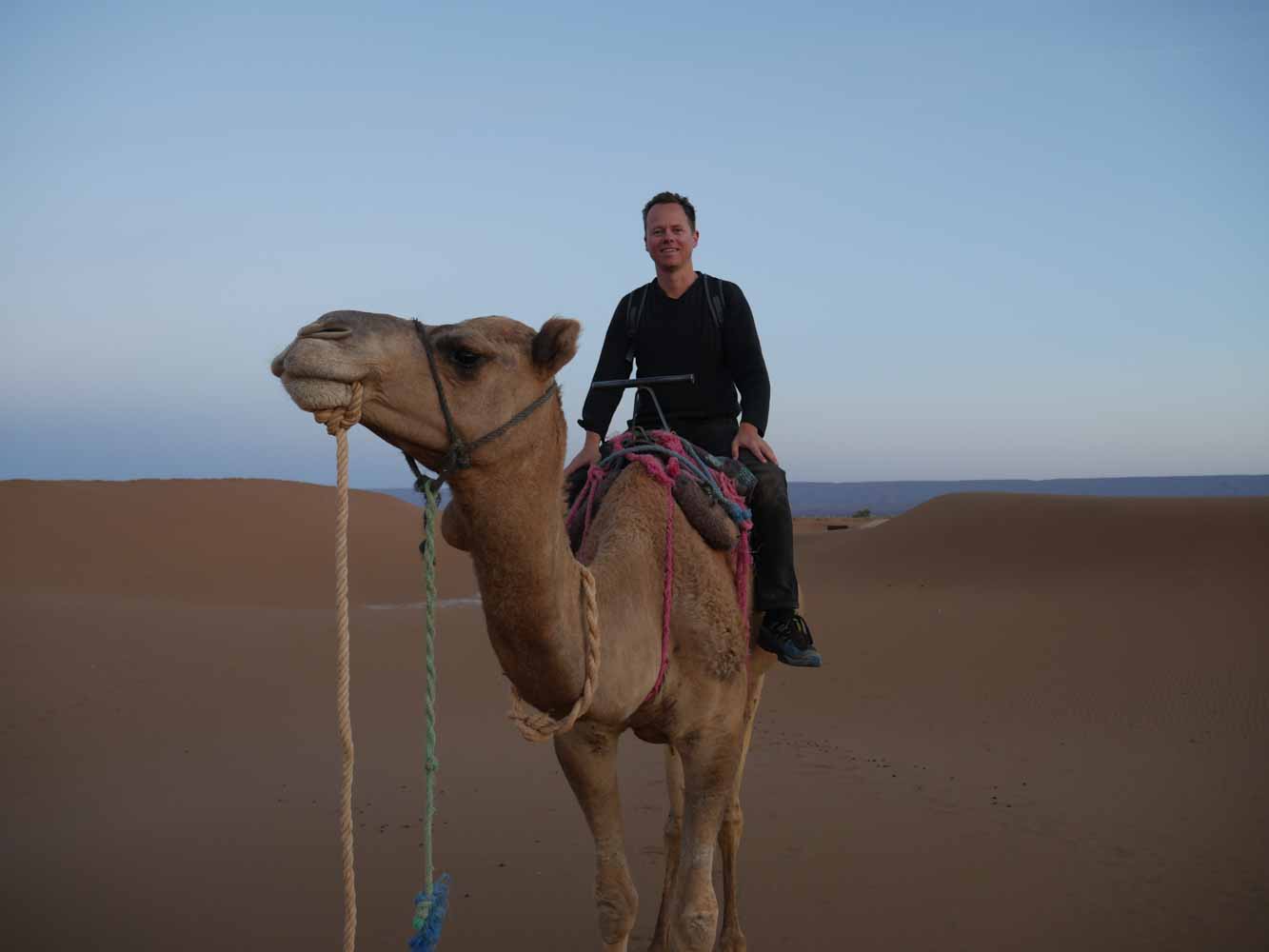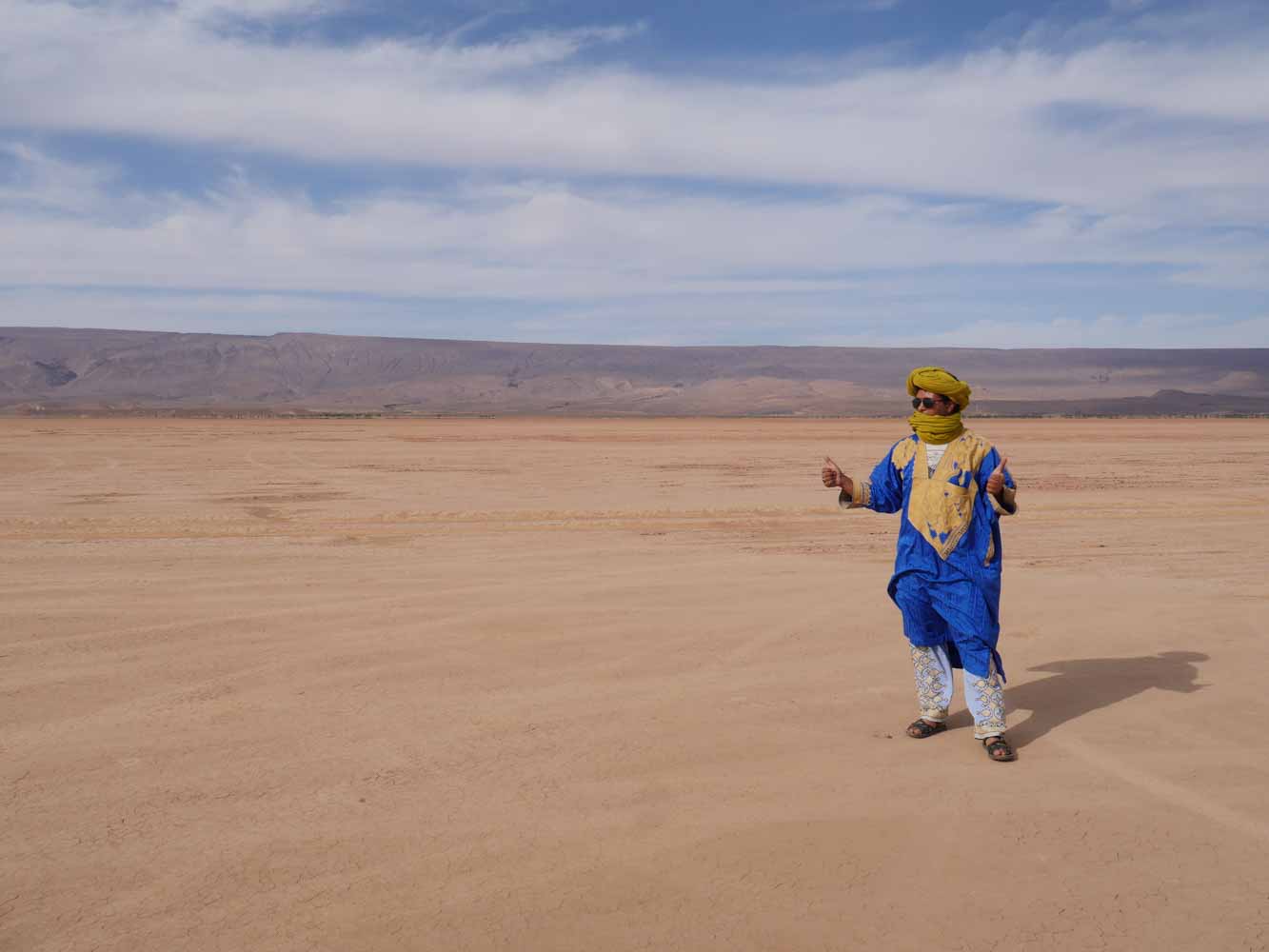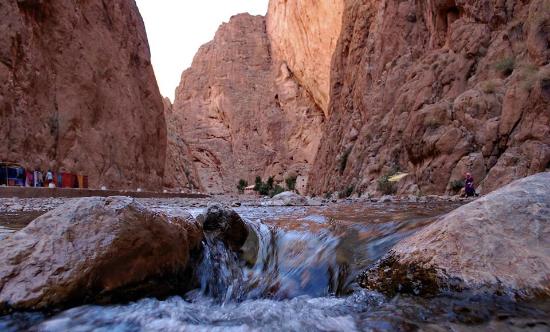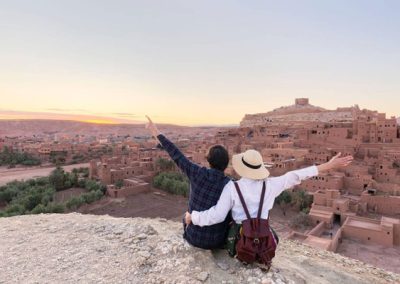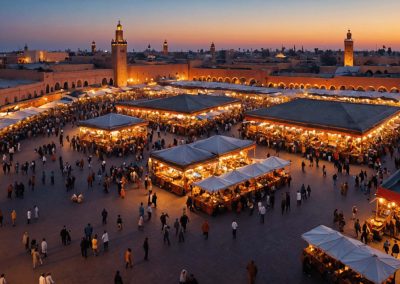Authentic Morocco 8 Days tour from Tangier to Marrakech via Desert
DURATION
8 Days / 7 Night
TOUR TIME
Daily
GROUPE SIZE
Unlimited
Overview: Morocco 8 Days Tour from Tangier to Marrakech via Desert
On this fascinating 8-day journey from Tangier, we designed to showcase the true essence of Morocco, its diverse landscapes, deep-rooted history, and warm hospitality. Begin your adventure in the cosmopolitan port city of Tangier, and travel through the enchanting blue alleys of Chefchaouen, the cultural heart of Fes, and the vast golden dunes of Merzouga.
Experience camel trekking at sunset, sleep under a blanket of stars in a desert camp, and continue through the scenic Dades Valley, Kasbahs of Ouarzazate, and the High Atlas Mountains, before arriving in the vibrant city of Marrakech.
This itinerary beautifully blends Morocco’s imperial cities, desert adventures, and mountain landscapes into one unforgettable journey, perfect for travelers seeking an authentic Moroccan experience.
Highlights of the Morocco 8 Days Tour from Tangier to Marrakech via Desert
- Discover the cosmopolitan charm of Tangier, Morocco’s northern gateway.
- Wander through the blue-painted streets of Chefchaouen, the “Blue Pearl” of Morocco.
- Explore Volubilis, the ancient Roman ruins, and the imperial city of Meknes.
- Enjoy a full-day guided tour of Fes Medina, the spiritual and cultural heart of Morocco.
- Experience a camel trek at sunset over the golden dunes of Erg Chebbi in Merzouga.
- Spend a magical night in a luxury desert camp, with traditional Berber music under the stars.
- Visit the dramatic Todra Gorges and the scenic Dades Valley.
- Discover the legendary Kasbah of Ait Ben Haddou, a UNESCO World Heritage site.
- Travel through the majestic High Atlas Mountains with breathtaking views.
- Explore Marrakech’s iconic landmarks, Bahia Palace, Majorelle Gardens, Koutoubia Mosque, and Jemaa El Fna Square.
Tour details: Morocco 8 Days Tour from Tangier to Marrakech via Desert
Day 1: Tangier – Chefchaouen
On our first day of the Morocco 8 Days Tour from Tangier to Marrakech via Desert, we will meet you at Tangier port and then drive you to Chefchaouen, where you can admire the amazing views of the Rif Mountains and Tetouan. At Chefchaouen, we will spend an amazing night enjoying the beauty of the Village. Chefchaouen is one of Morocco’s amazing villages, with its walls painted in blue, conveying a sense of peace and beauty. The village is also home to a stunning Medina, featuring narrow streets, blue buildings, the Uta EL-Hammam Plaza, and a restored Kasbah.
Day 2: Chefchaouen – Fez
In our second day of Morocco 8 Days Tour from Tangier to Marrakech via Desert, and after taking breakfast, we will drive toward Fez to spend the night there, crossing by Wazan, and other Rif villages, Volubilis, to see the Roman ruins and to know about its history, then to Meknes, to have lunch, and visit its famous Bab El Mansour door, and Moulay Ismail Mausoleum.
Day 3: Fez guided tourist trip
We will spend another night at Fez while exploring its interesting and famous places through the day. We will visit the old Medina with its small streets and alleys, the “Mellah”, the first built Jewish headquarter in Morocco, The cooperative Tile, The Attarine and Moulay Idriss Mausoleum, The Tanneries, The Royal palace door, and The oldest and famous university in the world “Al Qaraouiyine along with the incredible views of the Medina.
Day 4: Fez – Merzouga – Camel ride and night in the camp
After breakfast, we continue our Morocco 8 Days Tour from Tangier to Marrakech via Desert by traveling to Merzouga, to spend an amazing night, while passing by Tizi-N-Talghemt pass, Ziz Gorges, The High Atlas Mountains, You will notice part of the desert while approaching Errachidia, where we will have a delicious lunch with a nomad Berber family, Ziz valley, Erfoud, Rissani, until Merzouga, where you will be welcomed with a cup of Moroccan mint tea, followed by a camel riding, to enjoy the place, toward our camp, to take dinner while listning to the Berber music.
Day 5: Merzouga – Dades Valley
Try to wake up early if you wish to see a stunning view of the sun rising over the Sahara Golden Dunes. We will ride the camels toward the hotel to have a refreshing shower and breakfast, before driving to Dades Valley, where we are going to spend the night, passing by the Saghro Mountains, and Todra Gorges.
Day 6: Dades Valley – Marrakech
After having breakfast, we will travel to Marrakesh to spend the night. Along the pathway, we will cross the road of thousand Kasbah, where you can have some memorable photos, The Valley of Roses at Kelaat M’gouna, Ouarzazate city, Ait Ben Haddou Kasbah, which was belonged to T-Hami El Glaoui, the last Berber chiefs in the 20th century, where he used to settle during his travels from the Sahara to Marrakesh, and it is also a Unesco World Heritage site, then we will cross the High Atlas Mountains, and the beautiful view of the Berber villages.
Day 7: Marrakech “visit”
We will spend another night in Marrakesh while exploring its most historical, important, and cultural buildings and places. The Palace of Bahia, The Majorelle Gardens, The Saadian Tombs, and The Koutoubia Tower. We will also walk around hundreds of handicrafts, and souks while having lunch at Jemaa El Fna Square, and a free time to discover the city on your own in the afternoon.
Day 8: Transfer to the Airport
After having breakfast, our driver will drive you to the Airport as an end to our Morocco 8 Days Tour from Tangier to Marrakech via Desert.
included :
- Tour 4×4 / minibus with AC
- Driver
- Fuel
excluded :
- Flight
- Beverages
- Tips
BOOK THIS TOUR
Pricing table :
2 persons
3 persons
4 persons
5 persons
6 persons
NB: There is a 30% reduction for children under 12 years old whilst we do not charge for children under 5 years
Map of our Morocco 8 Days Tour from Tangier to Marrakech via Desert
Know Before You Go: Your Essential Tour Guide – Morocco 8 Days Tour from Tangier to Marrakech via Desert
To ensure you have a smooth, enjoyable, and unforgettable 8-day adventure from Tangier to the Sahara Desert and on to Marrakech, we’ve compiled this essential pre-departure information. Please read through these details to prepare for your journey.
1. Travel Documents & Money
Passport & Visa: Your passport must be valid for at least six months beyond your date of entry into Morocco. Most nationals (including US, UK, EU, Canada, Australia) do not need a visa for tourist stays of up to 90 days. Always check with the Moroccan embassy in your country for the most current entry requirements.
Money: The local currency is the Moroccan Dirham (MAD). It is a closed currency, meaning you cannot get it outside Morocco and cannot take it out. We recommend:
Exchanging Money: Bring Euros, US Dollars, or British Pounds in cash to exchange upon arrival at the airport, banks, or authorized exchange bureaus. ATMs are widely available in cities and are often the best way to get local currency.
Cash is King: While credit cards are accepted in larger hotels and some shops, cash is essential for souks, small restaurants, tips, and in rural areas. Budget for meals not included, souvenirs, and optional activities.
2. What to Pack: The Desert & Beyond
The key to packing for this tour is layers, as you will experience varied climates: coastal Tangier, the Rif Mountains, the arid Ziz Valley, the cold desert nights, and sunny Marrakech.
Clothing (Modest & Practical):
Modesty: Morocco is a Muslim country. While major cities are tourist-friendly, dressing modestly (covering shoulders and knees) is respectful, especially when visiting religious sites and rural villages.
Essentials: Lightweight, breathable clothing for daytime. Long-sleeved shirts and pants to protect from the sun. A warm fleece or sweater for cool mountain and desert evenings. A warm jacket is essential for the cold Sahara nights (especially in winter months, Nov-Feb).
For the Sahara Desert:
Footwear: Sturdy, comfortable shoes for walking and sandals. A pair of closed-toe shoes is better for the camel trek.
Headwear: A scarf or hat is crucial for sun protection during the day. A traditional turban-style wrap is also very effective against sun and sand.
Eye Protection: Sunglasses are a must.
Other Essentials:
Sun Protection: High-SPF sunscreen and lip balm.
Daypack: For carrying water, camera, and jacket during daily excursions.
Technology: Power adapter (Type C / E, standard European, 220V). A portable power bank is highly recommended, as access to outlets can be limited, especially in the desert camp.
Health: Personal medication, hand sanitizer, wet wipes, and tissues (as public restrooms may not always have them).
Entertainment: A book or downloaded music for the long drives.
3. Health & Safety
Food & Water: The food is a highlight, but to avoid “Montezuma’s Revenge,” stick to bottled water (avoid tap water, including for brushing teeth), and be cautious with raw salads and unpeeled fruit from street stalls. In restaurants, cooked food is generally very safe.
Must-Try: Tagine, couscous, mint tea, and fresh orange juice!
Stomach Upset: It’s wise to bring a general stomach remedy (like Imodium or Pepto-Bismol) just in case.
Safety: Morocco is a very safe country for tourists. However, standard travel precautions apply:
Keep valuables secure and out of sight.
Be aware of your surroundings in crowded medinas and souks.
Politely but firmly ignore “guides” who offer their services unsolicited. Your tour will include official, licensed guides where needed.
4. Cultural Etiquette & Interaction
Bargaining: Haggling is expected and part of the culture in the souks (markets). Start at about half the asking price, be polite, have fun with it, and be prepared to walk away if the price isn’t right.
Photography: Always ask for permission before taking photos of people, especially in rural areas and of shopkeepers. Some may expect a small tip (5-10 MAD). Do not photograph military installations.
Religion: Be respectful when near mosques (non-Muslims are generally not allowed to enter, except for the Hassan II Mosque in Casablanca). During the holy month of Ramadan, be discreet about eating, drinking, and smoking in public during daylight hours.
Tipping: Tipping is customary for good service.
Guides: 50-100 MAD per day per person.
Driver: 100-200 MAD for the entire tour, per person.
Camel Guides: 50 to 100 MAD per person.
Restaurants: A 10% tip is appreciated if service isn’t included.
Hotel Porters: 10-20 MAD per bag.
5. On the Road: Tour Specifics
Driving Distances: Morocco is a large country. This tour covers significant ground, so be prepared for some long, scenic drives (e.g., from the desert to Marrakech). The landscapes are breathtaking and part of the experience!
The Sahara Camel Trek & Camp:
The camel ride to the desert camp is typically 1-1.5 hours. Wear comfortable pants.
Desert camps range from basic to luxury. Our standard includes comfortable mattresses, blankets, and a shared bathroom facility, but manage your expectations; it’s an authentic desert experience!
The desert night sky is spectacular. If you’re into photography, this is your chance.
Accommodation: You will stay in a variety of places, including city hotels and a unique desert camp. Riads (traditional houses with interior gardens) are a highlight, but note they often have narrow, steep staircases and may not have elevators.
6. Connectivity & Communication
Language: The official languages are Arabic and Amazigh (Berber). French is widely spoken as a second language. English is common in tourist areas. Learning a few basic phrases in Arabic or French (like Shukran – Thank you, Salam Alaikum – Hello) will be greatly appreciated.
Internet & SIM Cards: Most hotels and riads offer Wi-Fi, though it can be slow, especially in the desert. For better connectivity, purchasing a local SIM card (from Maroc Telecom, Orange, or Inwi) at the airport upon arrival is inexpensive and highly recommended.
By preparing with this information, you’ll be ready to fully immerse yourself in the magic, mystery, and beauty of Morocco. We look forward to welcoming you on this adventure of a lifetime
FAQs about this 8 Days Tour from Tangier to Marrakech via Desert
Q: What is the best time of year to take this tour?
A: The most pleasant weather is during the spring (March to May) and autumn (September to November), when temperatures are mild and ideal for exploring. Summer (June to August) can be extremely hot, especially in the desert, but it’s a dry heat. Winter (December to February) offers pleasant days, but nights in the Sahara Desert and Atlas Mountains can be very cold, pack accordingly!
Q: How physically demanding is this tour?
A: This is a moderately active tour. It involves:
-
Long Drives: Some days include several hours of scenic driving with frequent stops.
-
Walking: Exploring medinas (old cities) involves walking on uneven surfaces, cobblestones, and stairs. A basic level of fitness is recommended.
-
Camel Trek: The camel ride into the desert camp is about 1-1.5 hours. It is generally not strenuous, but can be uncomfortable for those with back problems. You can often opt to walk alongside your camel for stretches.
Q: What type of accommodation can we expect?
A: You will experience a mix of accommodations:
-
Hotels & Riads: Comfortable, tourist-class hotels and traditional Moroccan riads (often with charming, historic character). Note that riads may have multiple floors without elevators.
-
Desert Camp: An unforgettable night in a Berber-style camp. Our standard camps provide comfortable beds with linens and blankets, and shared bathroom facilities (often with basic toilets and showers). Upgrade options to luxury camps with private bathrooms may be available.
Q: Are all meals included?
A: No, not all meals are included. The tour typically includes daily breakfasts and one dinner in the Sahara Desert. This allows you the freedom to explore local cuisine and choose your own lunch and dinner options, catering to all budgets and dietary preferences. Your guide will always have excellent recommendations.
Q: I have dietary restrictions (vegetarian, gluten-free, etc.). Can these be accommodated?
A: Yes, absolutely. Moroccan cuisine is very adaptable for vegetarians, with dishes like vegetable tagine and couscous. Please inform us of any dietary restrictions at the time of booking so we can notify all hotels, restaurants, and the desert camp in advance.
Q: What should I wear in the Sahara Desert?
A: Think in layers! During the day, wear light, breathable clothing, a hat, and sunglasses. As soon as the sun sets, the temperature can drop dramatically, so you will need long pants, a warm sweater, and a jacket. A scarf is also essential to protect from the sun and sand during the day.
Q: Is there Wi-Fi and phone service on the tour?
A: Wi-Fi is available in most hotels and riads, but the connection can be slow and unreliable, especially in the desert. Mobile phone service is generally good in cities and along main roads, but can be spotty in the mountains and remote desert areas. We recommend purchasing a local SIM card at the airport for the best connectivity.
Q: What is the group size for this tour?
A: To ensure a personalized experience, our group sizes are kept small. Please check the specific tour page or contact us for the maximum group size for your departure date. We also offer the option to make this a private tour for your party.
Q: What happens to my luggage during the camel trek to the desert camp?
A: This is a very common question! Your main luggage will remain securely locked in the vehicle. You will only need to take a small overnight bag with essentials like water, a toothbrush, a change of clothes, and any medications for your night in the desert. The vehicle will meet you at the camp the next morning.
Q: How much spending money should I bring?
A: This depends on your personal spending habits. We recommend budgeting for:
-
Lunches and dinners not included.
-
Drinks (water, soda, etc.).
-
Souvenirs and shopping.
-
Tips for guides, drivers, and staff.
-
Optional activities (e.g., a horse-drawn carriage in Marrakech).
As a general guideline, we suggest $30-$50 USD per person per day for discretionary spending, excluding major shopping.
Q: Is it safe to travel in Morocco?
A: Morocco is considered one of the safest and most stable countries in North Africa for tourists. The routes we travel are well-established and secure. As with travel anywhere, it’s important to exercise common sense: keep valuables secure, be aware of your surroundings in crowded areas, and follow the advice of your local guide.
